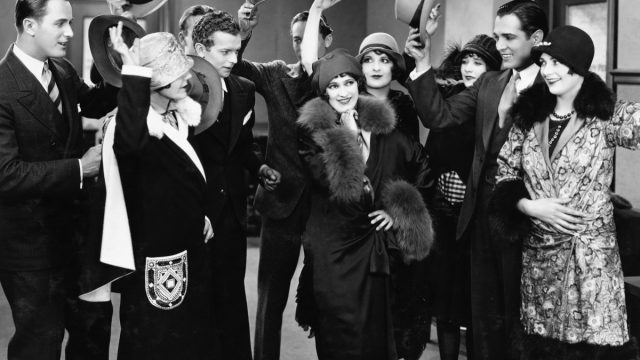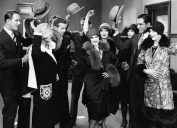
Everyone knows about the hat tip. When you tip your hat to someone, you're saying you respect them or the work they're doing. But that's not all it's about. These days—even though it has a long history in polite society going back to Medieval times—the "hat tip" has even become a verbal idiom, meant to thank or congratulate. (You'll often see it at the bottom of articles, too, in the form of "[H/T]," as a way for writers to indicate where they originally sourced information from.) So how did the hat tip, in all its forms, start?
Likely popularized in Anglo-Western societies in the etiquette-obsessed 18th and 19th centuries, the custom of tipping, or doffing, one's hat refers to the common practice of touching one's hat or lifting it fully off one's head as a polite method of greeting or saying goodbye. It was considered polite and respectful to remove a hat fully (to doff it) in a range of formal situations; mere tipping was fine for casual greetings.
Looking back further, though, Brewer's Dictionary of Phrase and Fable claims that removing one's hat is "a relic of the ancient custom of taking off the helmet when no danger is nigh. A man takes off his hat to show he dares stand unarmed in your presence." By that logic, the other moments when removing one's hat was required—when entering a medical facility or church, for example, and especially when in the presence of a lady—make more sense. What transformed into a casual show of politeness and etiquette began as a demonstration of vulnerability and trust.
Tipping one's hat became an established custom for the respectable, hat-wearing gentry (particularly the Victorians, though the tradition has been documented fairly consistently through the centuries). Penelope J. Corfield, Professor Emeritus in the Department of History, Royal Holloway, at the University of London, lays out the implications clearly in her 1989 essay "Dress for Deference and Dissent: Hats and the Decline of Hat Honour": "Above all, as the head was symbol of authority, the covering or uncovering of the head, in Western society, was for men an important signal of relative status." The concept and various practices of "hat honor" had major social repercussions (and was of course tied up with the intricacies of bowing).
The casual yet polite hat-tipping spoke volumes by itself, and showed a person's tastes while simultaneously allowing for a recognition of social status; a lower-class fellow was expected to go for a more elaborate gesture, removing his hat entirely, while the upper-class person would only need to tip or even just touch his hat. Those who aspired to climb the social ladder needed to study hat-doffing rituals if they were to pass as knowledgeable of etiquette.
As the years passed, the gesture evolved for regular citizens. Erving Goffman, a Canadian-American sociologist, suggested that, in the 19th and 20th centuries, the hat-tip was more frequent as a method of ending a social encounter. You tip your hat; the other guy knows to shut up. Goffman also pointed out a possible distinction between greeting strangers versus true friends: you tipped your hat to a stranger, but you full-on bowed to someone you know.
As a method of non-verbal communication, these days, the classic hat-tip has been boiled down to a simple nod of recognition—which, by the way, like the old-fashioned etiquette move, has both casual and formal forms, too: nod up to greet your friends, nod down to acknowledge your boss. [H/T Matt Isola, over at Medium]
To discover more amazing secrets about living your best life, click here to follow us on Instagram!





















